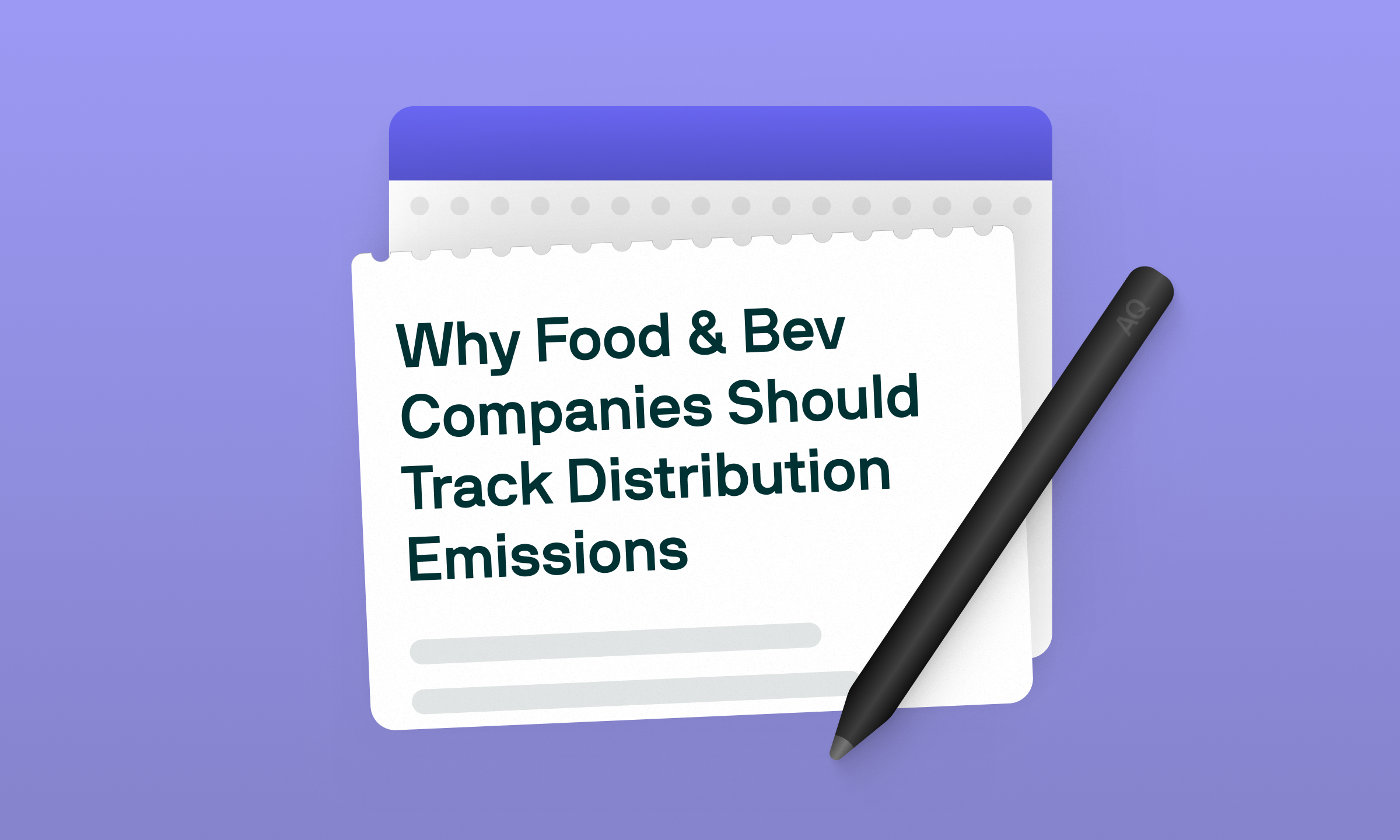How Water Management Can Turn the Tide on Climate Change

What you'll learn



This is the second part in our series exploring the critical intersections between climate change and agriculture. We've already dug into the importance of soil health. Today, we're diving into water. Because climate change is, at its core, a water crisis.
The Power of Water
Water absorbs heat, regulates temperature, and sustains all life on Earth. Lakes, rivers, and wetlands rank among the world's most biologically diverse environments, playing a crucial role in regulating carbon and nutrient cycles. As water moves through ecosystems, it transports minerals and nutrients that ensure healthy soils and plant growth.
This creates powerful ripple effects, enabling life to thrive, vegetation to flourish, and carbon to be stored. Peatlands alone sequester twice as much carbon as all Earth's forests combined.
While healthy wetlands function as vital carbon sinks, when degraded, they become significant sources of greenhouse gases. Additionally, as global temperatures rise, precipitation patterns become increasingly unreliable and unpredictable. Climate change affects water availability, quality, and quantity, generally leading to more extreme events.
Understanding the Water-Climate Loop
The disruption of the water cycle is one of global warming's most significant impacts, and these changes affect how ecosystems store carbon.
The Amazon rainforest shows this clearly. It has historically absorbed more greenhouse gases than it has released, acting as a carbon sink. But warming temperatures and deforestation are making the Amazon drier, leading to forest fires. As a result, large parts of the Amazon now release carbon instead of storing it.
Additionally, rising sea levels can contaminate freshwater with salt, while severe flooding can damage water treatment systems.
Water instability severely impacts agriculture, where droughts can destroy crops and floods wash away fertile topsoil, degrading land productivity and putting food security at risk.
A Matter of Food Security
Agriculture gulps down 70% of global freshwater supplies, yet climate change is rewriting the rules of where and when this water will be available. Once again, we face the challenge of growing agricultural yields while water availability becomes scarce and/or unpredictable.

One-quarter of global crops grow in water-stressed or unreliable regions. Our dietary staples, rice, wheat and corn, which provide half the world's calories, are particularly vulnerable, with 33% produced in precarious water conditions.
Water shortages impact both irrigated crops (34% of production) and rainfed agriculture (66%).
-min.png)
Just a handful of countries are responsible for 72% of the world's irrigated farming production. Two-thirds of these nations are rapidly draining their available water. In India, for example, 24% of crop production relies on watersheds that are using more water than nature can replace. For rainfed agriculture, which represents two-thirds of global crop production, challenges multiply as frequent droughts intensify and deforestation alters precipitation patterns. These disruptions make traditional growing cycles increasingly unreliable.
💧 Explainer
Irrigated agriculture: Farmers divert freshwater from streams, rivers, lakes, or from underneath the ground to water their crops. Water availability in this case is subject to the competing demand from farms, industry, and households.
Rainfed agriculture: Farmers rely on natural rainfall to water their crops. In this case, water availability is directly affected by climate change, droughts or irregular weather.
Watersheds: Watersheds are areas of land were water drains or “sheds” into a waterbody, such as a lake, river, or stream. In agriculture, watershed management involves systematic land-use planning, soil conservation, and water harvesting.
💧 How Much (Water) Does Your Dinner Really Cost?
Look at any food label and you'll find calories, fat, and protein, but never the water required to produce it. Being aware of which products are more water-intensive can help us make small dietary shifts with impact on our water footprint.

Solutions for Sustainable Water Management
Farm-level Initiatives
- Recycling wastewater: Treating and reusing farm wastewater for crop production reduces pollution of nearby water bodies whilst lowering water procurement costs.
- Precision irrigation: Replacing flood irrigation with drip systems dramatically reduces water usage by delivering moisture directly to plant roots, cutting evaporation losses.
- Smart scheduling: Using data-driven irrigation schedules ensures crops receive the right amount of water at the right time, eliminating waste while optimising growth.
- Dry farming: Working with nature rather than against it, this approach utilises soil moisture from the rainy season to grow crops during dry periods with minimal or no irrigation.
- Soil health practices: Cover crops, rotational grazing and reduced tillage improve the land's ability to absorb and retain water, creating resilience against both floods and droughts.
- Flood capture: In flood-prone regions, some farmers intentionally divert excess water to their fields, replenishing underground aquifers for future use.
- Crop selection: Shifting from thirsty crops to diversified, rotational systems reduces water demand while often improving soil health and farm income stability.
💧 Spotlight: GVK’s Regenerative Approach in India
In Andhra Pradesh, GVK works with over 21,000 small-scale farmers, primarily women, replacing water-intensive cotton with organic varieties that require minimal irrigation. Their regenerative approach improves the soil's water retention capacity while reducing erosion and enhancing groundwater replenishment. The organisation is also involved with drinking water access, bringing back local water committees in tribal villages.
Corporate-level Initiatives
The United Nations predicts a 40% global water shortfall by 2030 if current consumption patterns persist. Financially speaking, Barclays estimates that inaction on water risks could cost the consumer goods sector $200 billion, while proactive management would require just $11 billion.
Despite these stakes, corporate progress remains inconsistent. CDP's 2023 data shows less than half of food and beverage companies conduct water risk assessments (48%), even though 45% withdraw from already stressed areas. To bridge this gap, Food & Bev industry leaders are implementing four key strategies:
- Deploying monitoring systems beyond regulatory compliance
- Leveraging technology for precision water management
- Engaging communities in watershed protection
- Investing in water equity projects in vulnerable regions
At our recent Food & Beverage Summit in Chicago, sustainability leaders shared a practical framework for resource allocation: organisations should dedicate 50% of sustainability efforts to carbon, 25% to water, and 25% to other metrics (such as waste), depending on their specific materiality assessment.
💧 Spotlight: Starbucks’ Work to Prioritise Water Stewardship
Their commitment to conserving or replenishing 50% of water withdrawals, is being implemented through a multi-level strategy.
As disclosed in their 2023 Impact Report, they're funding targeted projects in eight priority watersheds, providing farmers with advanced water conservation techniques, amplifying impact through the UN Water Resilience Coalition, and addressing equity through microfinance partnerships that bring clean water to communities across South and Southeast Asia, Sub-Saharan Africa and Latin America.
At our Chicago Food & Beverage Summit, David Spitzley, Director of Impact Measurement & Reporting at Starbucks, urged organisations to establish the business case for water stewardship. "Why is it important to care about water? Why does it matter to the business?"
In his panel, Spitzley emphasised two critical aspects of water management: (1) Water is context-specific, not global, which explains the limited focus on international regulation compared to local governance; (2) Impact often manifests in unexpected areas, requiring comprehensive assessment.

Policy-level Initiatives
Effective water management demands supportive policy frameworks that create the right incentives and support systems. Key policy approaches include:
- Creating systems for compensated water transfers between farmers and urban areas.
- Expanding crop insurance to help more producers survive floods and droughts.
- Rewarding farmers for taking vulnerable land out of production and adopting water-friendly practices.
- Providing funding and expertise to help farmers install efficient irrigation and shift to less thirsty crops.
- Directing resources toward watershed-level conservation that benefits entire farming communities.
💧Spotlight: Policies in Action
EU Common Agricultural Policy (CAP): Supports water protection through the Nitrates Directive, limiting agricultural pollution in waterways. Eco-schemes reward farmers for practices like crop diversification and reduced tillage that improve soil's water retention capacity.
Dutch “Water-Soil as Guiding Principles” Policy: Requires balanced planning that weighs agricultural needs against water availability. For example, before land conversion for agricultural use, planners must assess water retention capacity and potential impacts on local water tables.
UK “Farming Rules for Water”: Sets clear water quality standards for English farmers since 2018. The Farming Investment Fund provides grants for efficient irrigation equipment and on-farm water storage, for example helping farmers transition from rain guns to more precise application methods.
Additional Resources
In case you want to dive deeper, here are some of our team’s favourites on water and water management:
📓 The Secret Wisdom of Nature, by Peter Wohlleben
📓 Water for Any Farm, by Mark Shepard
📺 Water & Power: A California Heist, by National Geographic
📺 Farming, Redefined, by FoodUnfolded
📩 Water Footprints 101, by Dan Enzer
And if you’ve missed the first article in the series, you can read it here.



.svg.webp)






.png)



